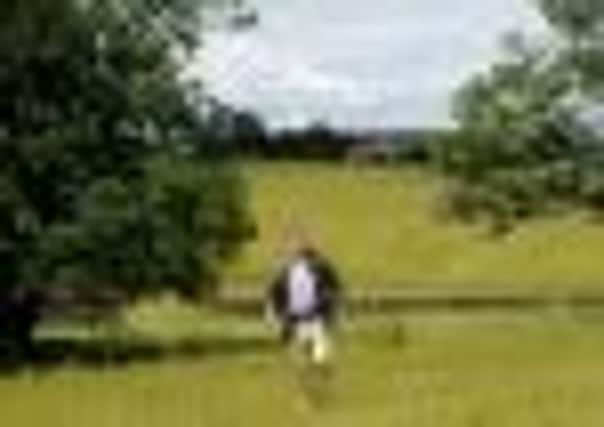Comeback hope for deer departed


Now moves are under way to bring deer back to the former Royal Forest of Knaresborough, as Britain struggles to meet an ever-increasing demand for venison in the country.
A patch of prime parkland in the grounds of Tatefield Hall, south of Harrogate between Beckwithshaw and North Rigton, has been placed up for sale by its owners.
Advertisement
Hide AdAdvertisement
Hide AdThe land has a long association with deer and sport for meat, dating back hundreds of years to the days when William the Conqueror used to hunt stag there.


In recent times the land has passed back into traditional agricultural use but now David Holmes wants to make the 90 acres of grassland a home for deer again.
Mr Holmes, perhaps best known in Yorkshire as the former owner of meat company Holmesterne Farm Co, has been renovating farms for the past few years and sees the parkland at Tatefield Hall as an ideal location for farming venison.
“You rarely come across a block of land so ideal for deer,” he said.
Advertisement
Hide AdAdvertisement
Hide Ad“It has been home to organic beef and lamb farming recently but it would be much better suited to grass land for grazing deer. It seems so obvious when there is such high demand for venison.”


Demand for venison in the UK has soared by 25 per cent in recent months. Once seen as the preserve of the wealthy, it is increasingly being viewed as both a healthy and affordable food.
However, domestic supply of the meat remains insufficient to meet the demand and venison is being imported from countries as far away as New Zealand in order to keep pace with consumers’ appetites.
The British Deer Farms and Parks Association (BDFPA) announced earlier in the year that it would be reaching out to owners and custodians of parkland to encourage them to farm deer, while talks are understood to be under way with some of the region’s National Trust properties to begin stocking the animals.
Advertisement
Hide AdAdvertisement
Hide AdMeanwhile, leading supermarkets are eager for more producers to join in as they seek to capitalise on the demand for the meat.
The ancient Forest of Knaresborough was once a very large royal estate to the south and west of Knaresborough.
A castle held its administrative centre and its grounds provided a hunting forest for William the Conqueror.
Over the centuries it was let out by the Crown to a succession of nobles. These noblemen were charged with acting as keepers of the castle and receivers of revenue from the tenants’ rents.
Advertisement
Hide AdAdvertisement
Hide AdAmong those to act as lord of the manor was Hugh de Morville, one of the knights who murdered Thomas Becket in 1170.
Numerous people held the lord of the manor title until 1372, when it became the task of John of Gaunt, the Duke of Lancaster, whose son in 1399 became Henry IV.
Since then the forest, as part of the Duchy of Lancaster, has belonged to the Crown.
The house itself on the grounds is dated back to 1631 and has been completely renovated, having been recently sold in a separate deal from the parkland.
Advertisement
Hide AdAdvertisement
Hide AdIt has been operating until relatively recently as an organic sheep and beef farm.
Mr Holmes said the land today was less wooded but still maintained a significant number of mature trees as well as “a rich sward of permanent pasture”.
He said: “Owning and farming your own park, either with deer or another enterprise, is potentially very rewarding, not only through farming income, steady capital appreciation and tax efficiency but through the sheer enjoyment of stewarding land and livestock.”
For more information contact Thornton and Linley, Knaresborough, on 01423 862271.